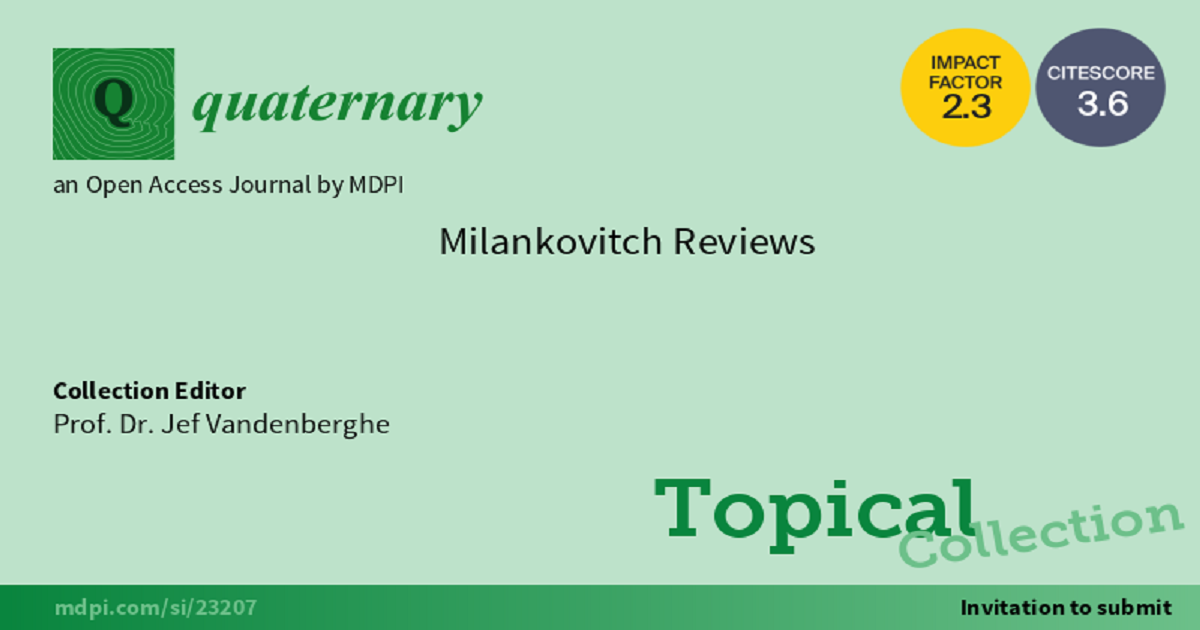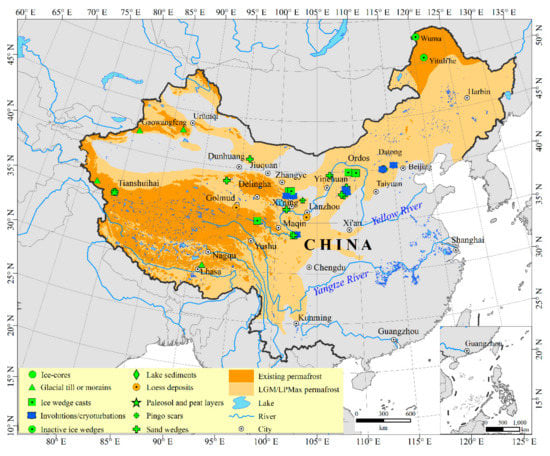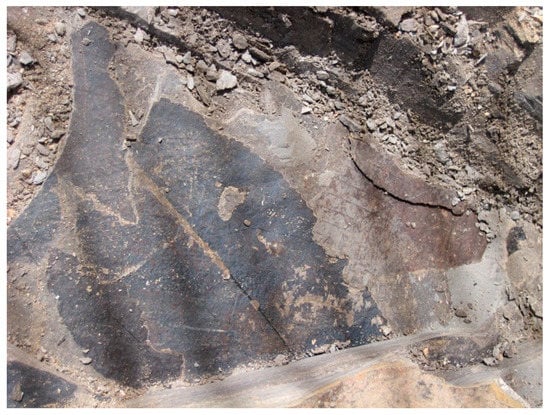Milankovitch Reviews
A topical collection in Quaternary (ISSN 2571-550X).
Viewed by 12471
Editor
Interests: fluvial geomorphology; morphological evolution; fluvial sedimentology; aeolian sediments; periglacial landforms
Special Issues, Collections and Topics in MDPI journals
Topical Collection Information
Dear Colleagues,
The journal Quaternary inaugurates a new topical collection called “Milankovitch Reviews” in honor of the Serbian mathematician-astronomer-climatologist-geophysicist Milutin Milankovitch, who discovered the relationship between the Quaternary glacial-interglacial recurrence and the periodic cycles in the relative position of the Earth with respect to the Sun, known as the Milankovitch cycles.
This new section consists of authoritative reviews on important topics in Quaternary science written by outstanding researchers especially invited by the Editor. Occasionally, non-invited submissions might be considered. In this case, potential contributors should first contact the Editor-in-Chief or the Managing Editor and send a proposal including a title, a summary, and a short representative reference list. If the proposal is approved, the author will be invited to submit a complete manuscript for peer review. If the proposal is not approved, the manuscript may be treated as a regular review paper.
There is no deadline for this topical collection, which will remain permanently open for submissions. Potential contributors are encouraged to contact the editors for any additional information or to seek clarification. The general Quaternary instructions for review papers apply to this collection.
Prof. Dr. Jef Vandenberghe
Guest Editor
Manuscript Submission Information
Manuscripts should be submitted online at www.mdpi.com by registering and logging in to this website. Once you are registered, click here to go to the submission form. Manuscripts can be submitted until the deadline. All submissions that pass pre-check are peer-reviewed. Accepted papers will be published continuously in the journal (as soon as accepted) and will be listed together on the collection website. Research articles, review articles as well as short communications are invited. For planned papers, a title and short abstract (about 100 words) can be sent to the Editorial Office for announcement on this website.
Submitted manuscripts should not have been published previously, nor be under consideration for publication elsewhere (except conference proceedings papers). All manuscripts are thoroughly refereed through a single-blind peer-review process. A guide for authors and other relevant information for submission of manuscripts is available on the Instructions for Authors page. Quaternary is an international peer-reviewed open access quarterly journal published by MDPI.
Please visit the Instructions for Authors page before submitting a manuscript. The Article Processing Charge (APC) for publication in this open access journal is 1600 CHF (Swiss Francs). Submitted papers should be well formatted and use good English. Authors may use MDPI's English editing service prior to publication or during author revisions.







